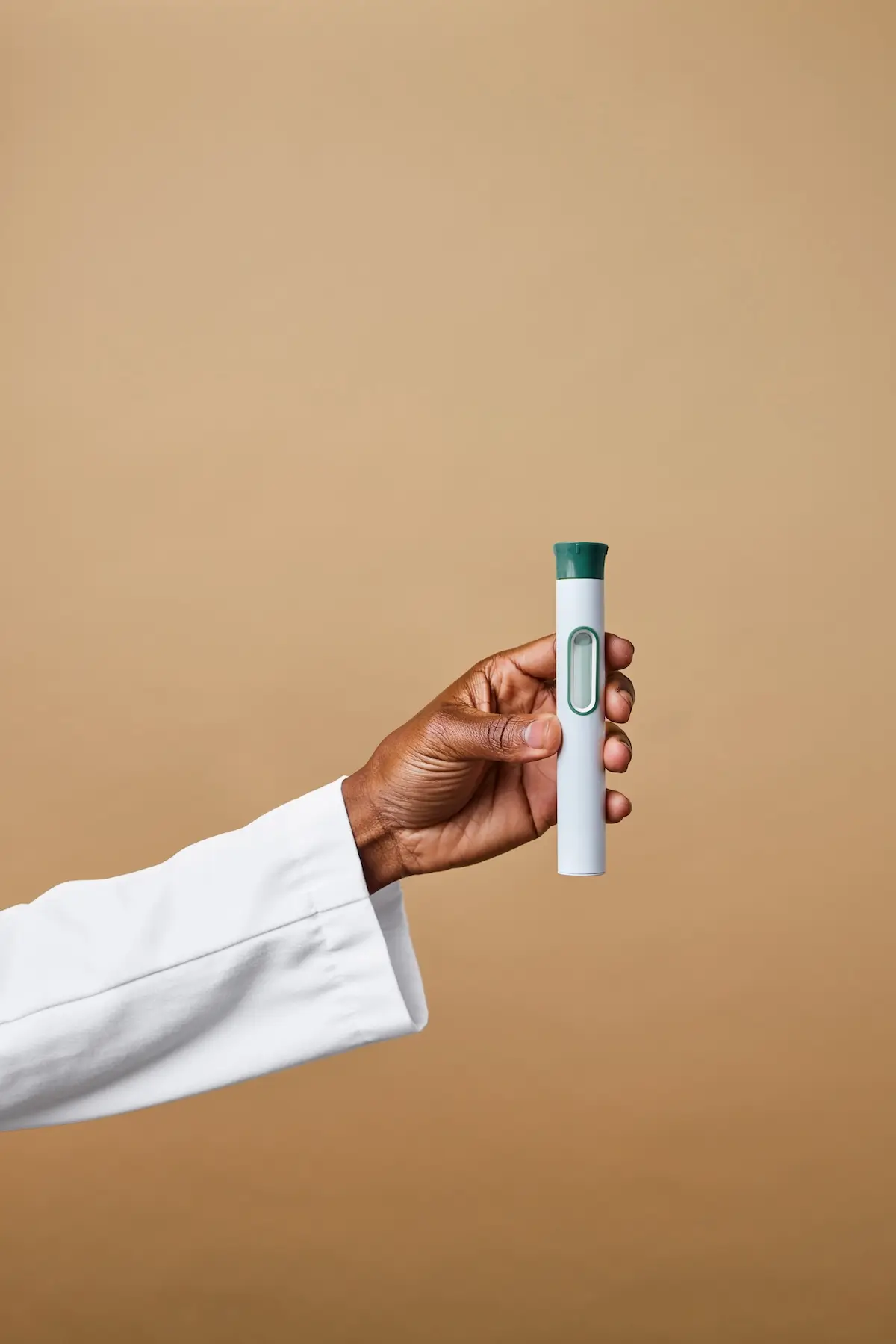How to use Mounjaro®?
To use Mounjaro injections safely:
– Take your current dose as instructed by your doctor
– Each Mounjaro pen contains 4 doses of the same strength (lasting 4 weeks)
– Only inject into your skin, never into a vein or muscle
– Inject once a week at approximately the same time each week
– Always follow your doctor’s instructions and read the patient information leaflet and user manual carefully before use.
To prepare your Mounjaro injection:
– Wash your hands with soapy water and dry them thoroughly
– Check your displayed dosage is correct on the original packaging and within date
– Remove the pen from the box and check for damage (You must not use a damaged pen)
– Remove the protective cap and check the dosage window – the liquid must be clear and free from debris or particles. Do not use if frozen
– Prepare a new needle, ensuring it is not unsealed, damaged, or bent
Priming Your Pen
It’s important to prime your pen before every dose to ensure you receive the correct dosage and confirm your pen is working properly.
To prime your Mounjaro pen:
– Remove the paper tab from the outer shield of your selected needle
– Push the capped needle straight into the pen and turn clockwise until secured
– Remove the outer needle shield (set aside for later use), then remove and discard the inner needle shield
– Slowly turn the dose knob until you hear 2 clicks and see the extended line in the dose window (prime position)
– Release medication into the air by pushing the dose knob until it stops. Count to 5 until the ‘0’ icon appears – do not inject into your body.
Once medication appears at the needle tip, your pen is primed.
Note: If no medication appears, repeat steps 4-6 no more than 2 additional times. If still unsuccessful, change the needle and repeat once more. If this doesn’t work, contact your doctor or pharmacist.
Injection Sites
Mounjaro can be injected into:
– Your abdomen
– Upper legs
– Upper arms (with assistance from someone else)
Best practices:
– Switch injection sites weekly
– Divide the chosen area into 4 sections
– Inject at least one finger width away from your last injection
– Stay at least 5cm away from the belly button when injecting into your abdomen
Injection Process
1. Choose your injection site (no need to squeeze or hold the skin)
2. Turn the dose knob until it stops and the ‘1’ icon appears in the dose window (represents one 0.6ml dose)
3. Insert the needle into your skin at the chosen site, ensuring you can see the dose counter
4. Push the dose knob until it stops. Count to 5 while holding the dose knob, check for the ‘0’ icon before removing the needle
5. Pull the needle from your skin (a small drop of medication at the needle end is normal and won’t affect treatment)
6. Confirm the ‘0’ icon is displayed, indicating you’ve received the full dose/
If you don’t see the ‘0’ icon: Insert the needle back into your skin and finish the injection without redialing the dose. Consult a doctor or pharmacist if unsure.
Post-Injection Care
– Carefully replace the outer needle shield and discard in your sharps bin
– Replace the pen cap and store until your next dose
Dosage Information
The standard Mounjaro dosage progression is:
Starting dose: 2.5mg once weekly for 4 weeks
After 4 weeks: Increase to 5mg once weekly
If needed: Increase by 2.5mg each month
You can remain on a lower dose if satisfied with your treatment
Available Dosages
Mounjaro pens are available in the following strengths:
2.5mg
5mg
7.5mg
10mg
12.5mg
15mg (maximum weekly dose)
Your dosage will be gradually increased over 4-week intervals. Only increase your dose if a lower dose isn’t effectively managing your weight. Never increase your Mounjaro dose without your doctor’s permission.




